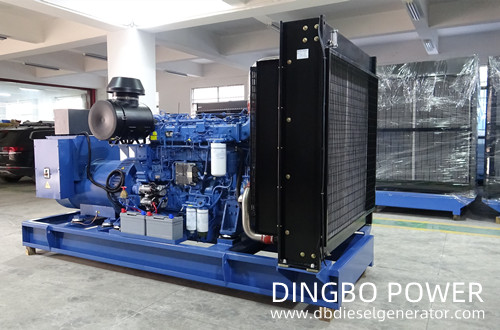Diesel three-phase generator usually refers to the electromagnetic device driven by the prime mover to generate current, leading to three fire wires so as to achieve a higher voltage power. If you encounter a failure can not work properly, it is likely because the generator line or magnetic circuit is damaged, today Dingbo Power will introduce you about what are the reasons why the diesel three-phase generator sets do not generate electricity .
1. Diesel three-phase generator does not run according to the limited technical conditions, such as high stator voltage, load current is too large, stator winding copper loss increases.
2. The frequency is too low, so that the cooling fan speed slows down, affecting the generator heat dissipation, the power factor is too low, so that the rotor excitation current increases, affecting the rotor heat.
3. It is necessary to check whether the indication of the monitoring instrument is normal. If it is not normal, necessary adjustments and treatments should be implemented to ensure that the generator operates according to the required technical conditions.
4. If the diesel three-phase engine does not generate power, it may also be that the three-phase load current of the generator is unbalanced, and the overload of the single-phase winding will overheat. If the three-phase current difference exceeds 10% of the rated current, it is a serious imbalance of the direct current, and the imbalance of the three-phase current will cause negative sequence magnetic field, then it will add losses, which will affect the heating of components such as magnetic pole winding and iron ring. The three-phase load should be adjusted to make the phase current maintain balance as much as possible.

5. Insufficient cooling water or cooling water, oil temperature is too high in the case of operation. Insufficient diesel generator cooling water will reduce its cooling effect, the diesel engine because of the lack of effective cooling and overheating. Cooling water, oil temperature is too high, will also cause diesel engine overheating. At this time, the diesel generator cylinder head, cylinder liner, piston assembly and valve, etc. are mainly subjected to heat load, its mechanical properties such as strength, toughness and other sharp decline, so that the deformation of the parts increased, reducing the fit clearance between the parts, resulting in the inability to generate electricity.
6. Stop the machine immediately after sudden unloading or emergency shutdown with load. After the diesel engine generator is turned off, the circulation of cooling water in the cooling system stops, and the heat dissipation capacity sharply decreases. The heated parts lose cooling, which can easily cause overheating of cylinder heads, cylinder liners, cylinder blocks, and other components, resulting in cracks or excessive expansion of the piston and jamming in the cylinder liner. On the other hand, if the diesel generator is shut down without cooling at idle speed, the friction surface will be lack of oil. When the diesel engine is restarted, the wear will be aggravated due to poor lubrication. Therefore, before the diesel generator flameout, the load shall be removed, and the speed shall be gradually reduced, and the no-load operation shall be carried out for a few minutes, otherwise it will be easy to fail to generate electricity.
7. Brush and slip ring fault: if the brush and slip ring are in poor contact or the spring pressure is too small, this situation will also cause the diesel generator to fail to conduct normal flow, thus generating no power.
We hope the above information will be helpful to you. Dingbo Power is a professional and experienced manufacturer of diesel generator sets. If you are looking for diesel generator sets or you are interested in diesel generator sets, please contact us by email dingbo@dieselgeneratortech.com .
Comments
Post a Comment